There are a few things easier than cooking on a gas stove when camping, eating cold food is one.
I love the simplicity of canister gas stoves: turn the control knob, light the flame and we are "cooking with gas"

I have made a previous post about the virtues of compact gas stove here.
I have since updated my stoves and opted for something that is stable but still light.
I prefer to cook with non-dedicated pots that are not part of a system (with flux ring, like JetBoil and MSR Reactor).
I like the flexibility of being able to use a small frying pan (that I picked up at K-Mart for under $10) when a fancy dinner or breakfast is in order.
Therefore I looked at stoves that are close to the ground, have a decent footprint for stability and have a large burner (Pocket Rocket's small burner head scorches light pots).
Above are two stoves: left is a very cheap one in stainless steel from eBay, right a bit more expensive one in titanium.
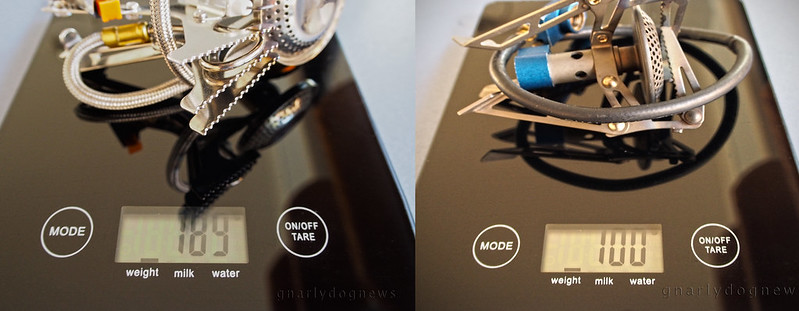
For the last 18 months I have been using a light titanium stove that sits low to the ground. At 100gr. is very light, packs away small and shows no signs of rust.
The stove is so light that a small movement of the flexible hose tips it over if no pot is on the stove

I have used this stove for approximately 100 days, cooking extensively meals for two, occasionally for 4.
Coupled with a light windshield (very thin aluminium sheet) it has worked well in above freezing temps, even in very windy locations. The windshield is critical when there is a breeze as it retains heat and saves fuel.
When cranked to the max the stove roars and emits too much heat; I usually have it regulated at about half power.
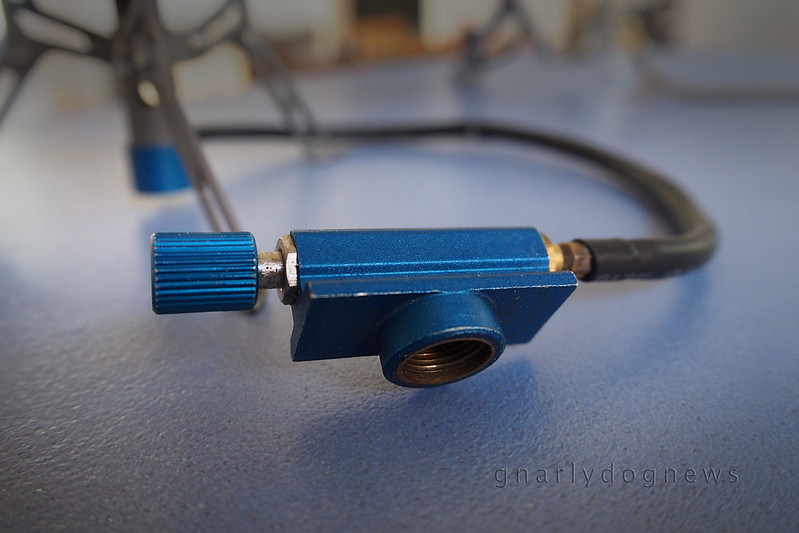
The flame control knob is at the canister spigot, away from the heat of the burner and easy to adjust when the stove is going. I like that: no burned fingers trying to reduce the flame when I feel my risotto is about to get scorched.

But there is little fault: the hose junction into the base of the burner's jet.
While the hose does have an O ring on the shaft of the hose intersecting the (blue) aluminum base, the hose can not freely rotate. A slight redesign would make this stove even better.
Trolling on eBay I came across this stove: a compact stainless steel design with large burner (did I mention I don't care for burned food?).
Labelled as "Lingyun portable gas butane stove..." I was impressed by the price: $17.99
I ordered one as I thought it would be great as a back-up stove.
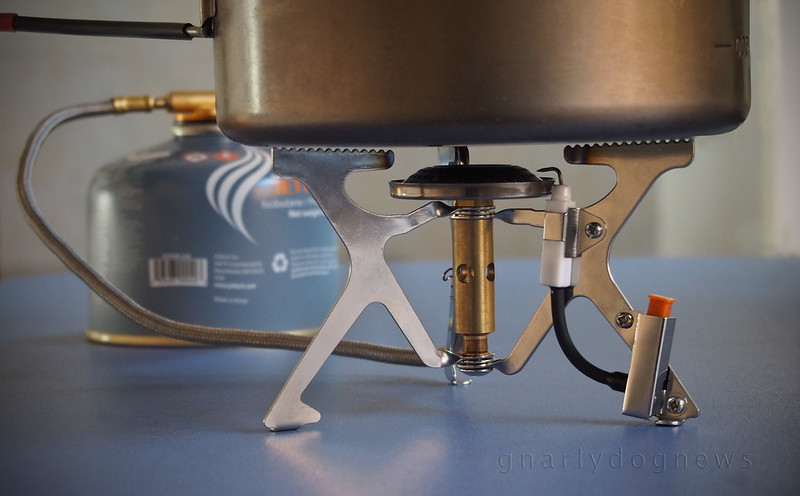
The difference on this one are the legs, the fuel supply and the ignition.
I don't care about the piezo ignition where the stove can be started by just pressing a button: my experience is that they don't last. Luckily I can unbolt the unit when it will stopped working and use my trusty BIC lighter.
The legs of the stove are however made of one-piece sheet metal; they can not be accidentally folded and collapsed while operating the stove making this unit a bit more sturdy, requiring less care.
The downside is that this stove is not as compact as the titanium one, when stowed.
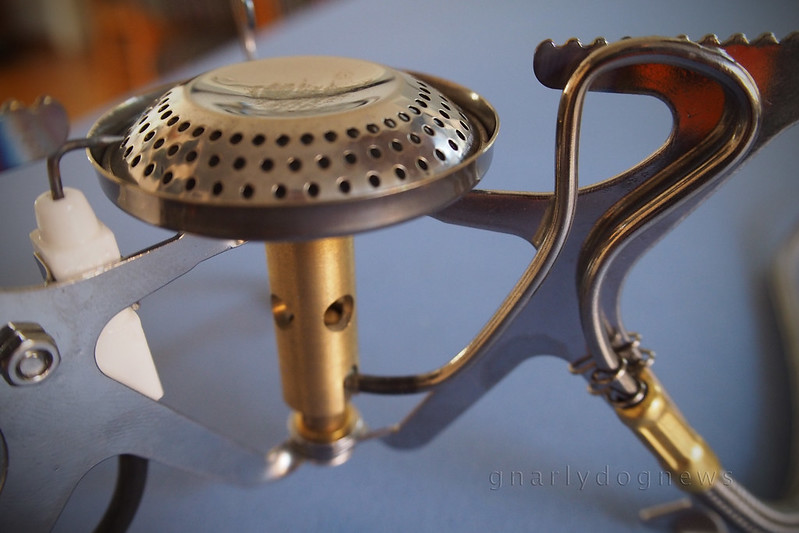
Last but not least the fuel supply.
The gas travels from the canister to the stove via a flexible hose and then, just before reaching the jet is makes a loop of solid pipe passing close to the flame area.
It is intended to vaporize the butane/propane gas before it reaches the jet when ambient temperatures are low, close and below freezing.
While not really a concern to most sea kayakers in tropical locations, outdoor users in colder environments lament poor performance of gas canister stoves when temps are chilly.
The preheating loop takes care of that and delivers hot gas to the burner (once the stove has been operating for a minute or so).
And while I write about gas stoves I should mention this little adapter.

*If you run the canister sideways with the notch up, your canister will deliver fuel vapors. If you run the canister with the notch pointed down, your canister will deliver liquid fuel.
The gas canister stoves use a Lindal valve, where the stove or regulator are screwed-on to create a leak-proof seal. Gas canisters are usually a mix of butane/propane for better performance in low temperatures. They are readily available at good outdoor stores but not so easy to find elsewhere.
I had a bit of trouble locating the Lindal valve canisters in Sweden but I saw plenty of push-on style butane cans.
Again, on eBay I was able to source an adapter that allows screw-on stoves to be used with the much cheaper ($5 for 4 cans) option of push-on cans.
The push-on cans are often just basic butane, more suited for warm climates; however I have also seen the butane/propane mix ones.

And to get that gas stove working well in windy places (cooking inside the tent is a bad idea) I sourced a matching windshield.
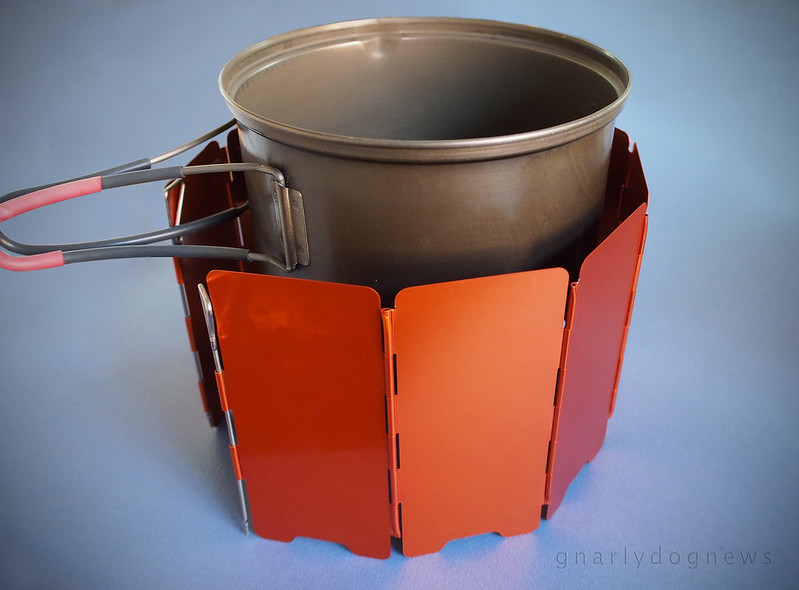
This shield is a bit heavier than my super thin one that I have used for decades, the advantage is that it has little spikes that can be driven into the ground to keep the stove and shield well connected.

.



So well researched and explained. And awesome pics as usual.I read every word. Even as an occasional kayak camper, I can so relate to the importance of a stove that works well and is easy to pack - wind is something to count on! Thank you!
ReplyDelete